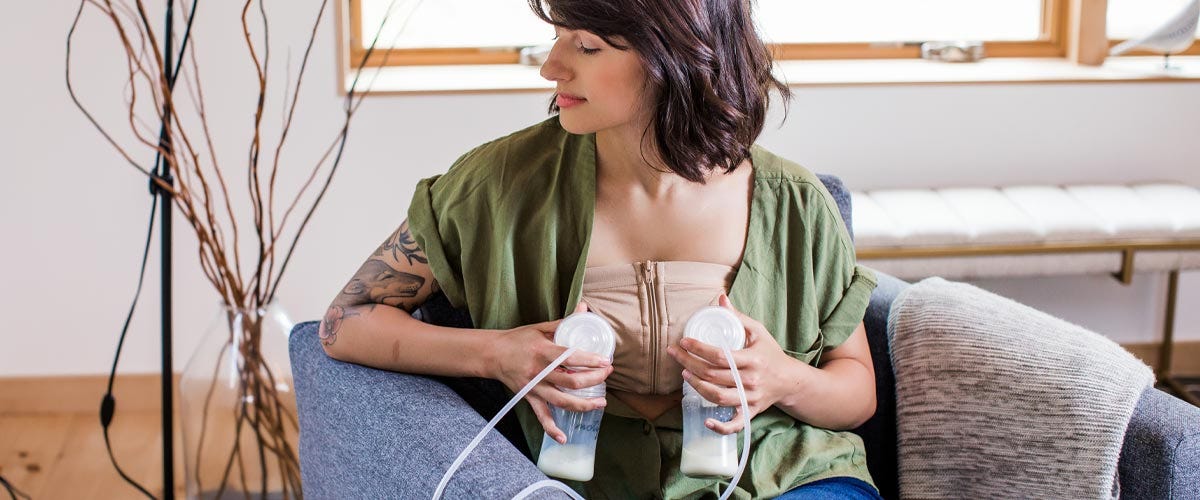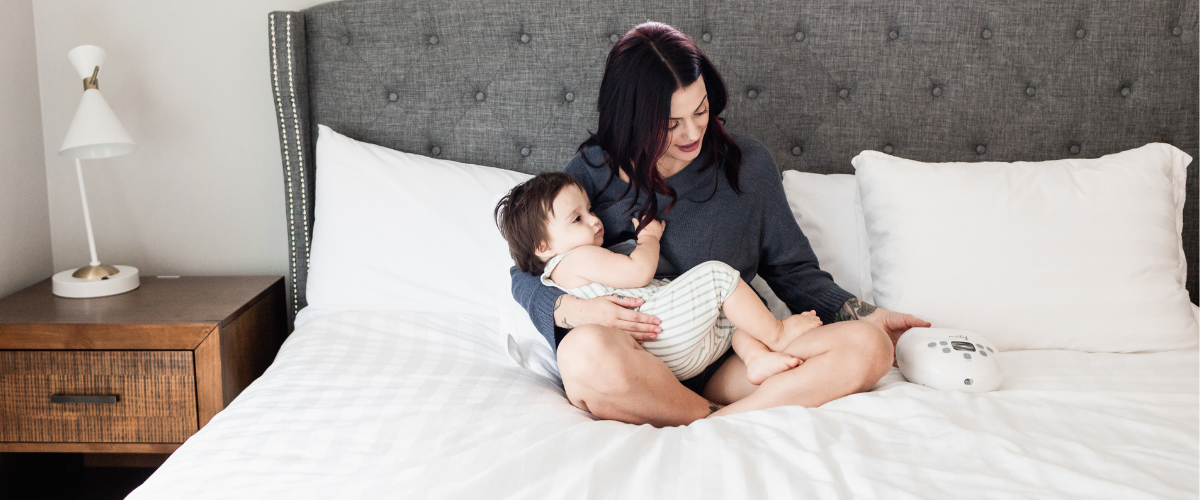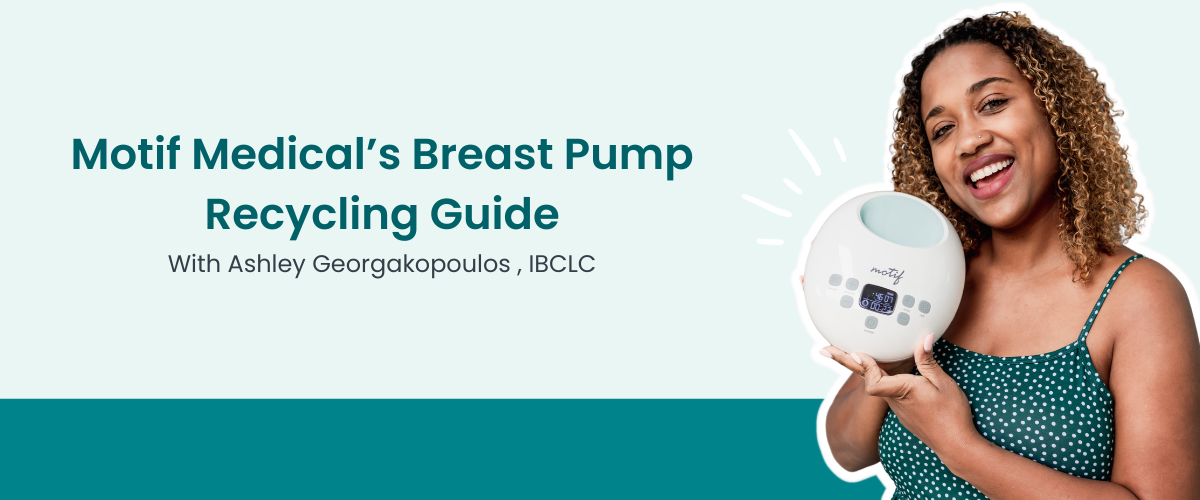Nipples are designed to become erect through stimulation, be it a combination of prolactin / oxytocin hormonal response, nerve stimulation, such as when hot water from the shower hits the back where the nerves are located, or physical stimulation, such as a baby suckling or a breast pump suction.
Mother's nipples are unique, as they are accompanied by other connective tissues in the breast that signal both the production and the release of milk to breastfeed. That's right, breastfeeding is not all about suction, but the actual stimulation of nipples and milk ducts to contract out breast milk.
Nipple Stimulation
- Prolactin: the hormone responsible for making milk; is present in both females and males and is the reason behind nipples becoming stiff
- Nerves: the main nerves that signal prolactin release and nipple change are located around the back, which is why back-rubs and warm showers can trigger a letdown response of milk from the resulting hardening of the nipples
- Physical stimulation: when the actual nipple receives physical contact. A baby suckling with a good latch will stimulate the nipple, thus pressing the big red button for oxytocin release, causing a milk ejection response.
However, that stimulation can be a lot more difficult to achieve when dealing with flat nipples or inverted nipples. Furthermore, flat or inverted nipples combined with the separate issue of latching or latching properly could lead to soreness, engorgement, low milk supply from inadequate output and stimulation, as well as infections from damaged nipples, such as thrush, or lack of flow to flush out bacteria, causing mastitis. Despite this, breastfeeding with flat or inverted nipples is possible!
Breastfeeding with Inverted Nipples
Inverted nipples, also referred to as retracted nipples, lie flat against the areola or even inward. This retraction actually happens at the base of the nipple from the inside, and occurs during the development of the nipple and the rest of the breast tissue while the body develops in the womb. This means that the structure of the breast tissue was determined before you were even born! True inversion or retraction of the nipple is when a piece of tissue prevents the nipple from fully extending, and the difficulty of breastfeeding with flat or inverted nipples will be determined by the degree of inversion. It can also occur on only one breast, not necessarily both.
In a mild case, for instance, breastfeeding positions that encourage a deep latch with the help of gravity may help avoid sore nipples and help the baby latch with a mouthful of breast, versus a nipple feed, and get enough milk. Such positions can be laid back, using the weight of the baby's head to push the baby's mouth fuller onto the breast, as well as football position to use the weight of the breast for the same effect.
Certain holds, such as the C-shape of the hand behind the areola, or the Hoffman Technique, which uses both thumbs on the areola, can help get milk flow going and encourage a deeper latch.
For more difficult degrees of inversion, your lactation consultant may suggest using a nipple shield. This not only helps soreness, but creates a stiffness needed for the baby to latch onto.


The inversion may actually cause pain from the connective tissue pulling from the inside when the nipple is trying to become erect, or even with pumping. Unfortunately, in order to protect supply, additional expression may be needed if the baby is still unable to transfer milk effectively. This will be determined through tools, such as a weighted feed, which should be performed only by a board certified lactation consultant (IBCLC) or a trained pediatrician familiar with breastfeeding intake. Expression can be done by hand if using a pump is too painful from suction.
Breastfeeding with Flat Nipples
A flat nipple does not always "stick out," like we think of when we are cold or sexually aroused. Pregnancy helps to prepare the nipples to breastfeed, but anatomies have variances that will look different from person-to-person when at rest or relaxed. This means it may take a little extra help to stimulate the nipples in preparation.
Just prior to attempting to latch the baby, "twiddling" the nipple using the thumb and forefinger may help signal more blood flow to the area. This motion involves gentle tugging, not rubbing. Older babies are known for doing this, themselves, on one breast while feeding from the other. This helps both breasts receive the signal to release milk, too.
Other Concerns with Nipples
Mothers are quick to take on blame when breastfeeding is painful or problematic, especially when weight gain or plateauing is an issue and milk supply is compromised. However, there are mimics to flat and inverted nipples that have nothing to do with mother's body. Tongue and lips ties also prevent a baby from latching well and drawing the nipple out to stimulate.
A great way to screen for this is looking at the nipple shape if they have latched at all. Theoretically, the nipple shape should look the same coming out of the mouth as it did going in. Lipstick shapes, seams, or flattening can be a sign the baby is putting all of the pressure directly on the nipple and not getting a deep latch. First time mothers and veterans alike will sometimes need help with positioning, too, which can have an effect on how a baby latches onto the nipple and breast.
Remember: An International Board Certified Lactation Consultant (IBCLC) is trained to play detective and get to the root of the issue(s) and provide a game plan to address the issue and teach comfort measures over time until resolved.








